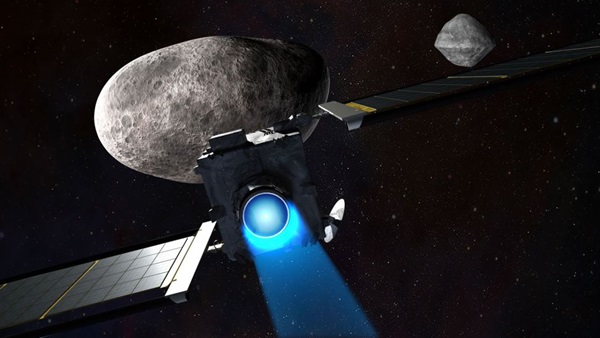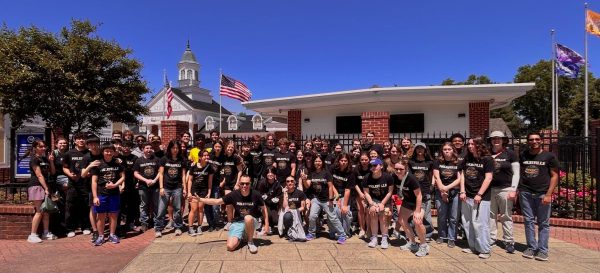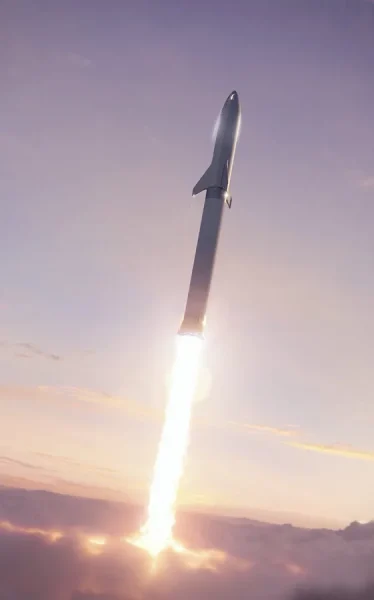NASA’s DART spacecraft crashes into asteroid Dimorphos, smashing frontier for planetary defense

Image from Astronomy Magazine
To test out the asteroid deflection technique of kinetic impaction and to strengthen planetary defense, NASA’s Double Asteroid Redirection Test (DART) was launched and collided with the asteroid Dimorphos.
Before the collision, Dimorphos revolved around Didymos — another asteroid — with an orbital period of 11 hours and 55 minutes. Following the DART collision, the asteroid’s orbit was shortened by 32 minutes, which exceeded scientists’ initial estimate of it being shortened by merely 10 minutes.
Not only did DART shorten Dimorphos’ orbital period, but its collision caused a crater to form on the asteroid as well. Telescopes around the world observed Dimorphos to see if there were any subsequent changes to the asteroid. Two days after the impact, it was also observed that DART had caused a 6,000-mile (10,000 kilometers) long stream of debris. More recently, it was discovered that Dimorphos had sprouted an additional stream of debris following the impact.
Dimorphos is not a threat to Earth and was chosen for the impact simply because Didymos and Dimorphos are relatively easy to observe from Earth.
Not only are scientists around the world observing the event, but so is the Poolesville community, and DART has seemed to make an impact locally as well.
“Following the news of DART’s impact, I have only felt safer in our planet’s defense against asteroids,” said freshman Gabe Chacon. “It was a monumental achievement for NASA and everyone who worked on the project. Knowing of the success of it I believe that I can entrust leaders in science in future missions while feeling safer back on Earth.”
The DART mission was built and carried out through the Johns Hopkins University Applied Physics Laboratory and collided with Dimorphos on September 26, 2022. Whilst planning asteroid defense techniques, something they kept in mind was to attempt to deflect an asteroid out of its path from Earth rather than blowing it to bits as the latter strategy could lead to the asteroid’s remnants falling down onto Earth.
Under the European Space Agency, the Hera probe will be conducting a follow-up on DART’s impacts on Dimorphos and the Didymos binary system and thus will be launched October 2024. The mission will provide insight into its internal properties. It will be able to go into greater detail about the outcome of NASA’s DART mission and its usage of the kinetic impaction technique. Both the Hera probe and the DART spacecraft indicate great advancements in the astronomy field, with Hera being the first probe to be among a binary asteroid system, and DART being humanity’s first attempt to intentionally shift the orbit of a celestial object.
Physics teacher Mr. Daniel Savino highlighted how the astronomy field has progressed over the past century.
“I have confidence that as long as we remain scientifically minded, the next 100 years will take us to inconceivable places,” Savino said, “What we’re doing now is not something people 100 years ago really thought about. Even science fiction couldn’t wrap its head around what we’re doing now…It’s kind of cool that science has its way of catching up to science fiction, and this is an example of that.”

Belinda is a freshman in the Humanities program and this is her first year working with The Pulse. She does Taekwondoe, but would like to get into a school...










